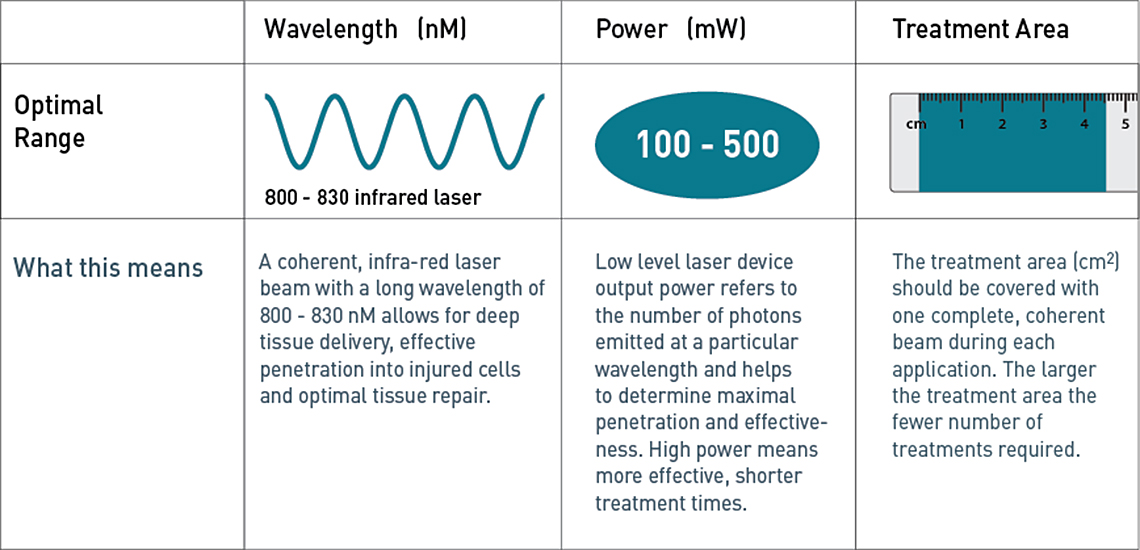LOW LEVEL LASER THERAPY (LLLT)
has been used for decades, helping people manage with long-term injury and relieve chronic pain.

Low Level Laser Therapy (LLLT)
Laser is actually "light"
A laser is a device that emits light. The word ‘laser’ is actually an acronym. It stands for Light Amplification by the Stimulated Emission of Radiation. Lasers differ from other sources of light because they emit light coherently. This allows them to be ‘directed’ or focused on a particular area of the body.
WHAT IS "LOW LEVEL" LASER?
Soft laser, or low level laser, uses low intensity, coherent light in wavelengths typically up to about 1000nM. The light particles, known as photons, penetrate deeply into the tissue without heating or hurting the skin. The wavelength at which the laser emits determines the effective depth of penetration, within the tissue, of the laser energy delivered.
THE BODY RESPONDS
The transfer of light energy into the tissue, modulates certain biological processes within the tissue and beyond. It activates the body’s natural mechanisms – assisting the cells to activate biological functions. Natural and gentle. Scientific without being artificial. Pretty nifty.
If you prefer to watch our informative videos click here
TIMELINE OF LOW-LEVEL LASER
While the history of photomedicine stretches back thousands of years, it was during the 20th century that the scientific application of particular wavelengths of light began.

CRITICAL ELEMENTS OF LOW LEVEL LASER
The therapeutic effect is dependent upon three key elements in low level laser delivery. See how the B-Cure compares

3 pathways to pain relief- one device
REDUCE INFLAMMATION
LLLT increases the production of nitric oxide (NO) increasing vasodilation and bringing oxygen, fuel molecules and other metabolites to the injured tissue resolving inflammation.
PAIN RELIEF
LLLT has a selective inhibitory effect on pain receptors and causes a reversible neural blockade. It also stimulates the production of endogenous opioids, nitric oxide, serotonin and acetylcholine.
NATURAL PATHWAYS
LLLT stimulates specific parts of our cells’ anatomy (the mitochondria) to produce hormones such as adenosine triphosphate (ATP or basic cell energy), reducing oxidative stress (cell damage that can be caused by long-term exposure to injury or pain)